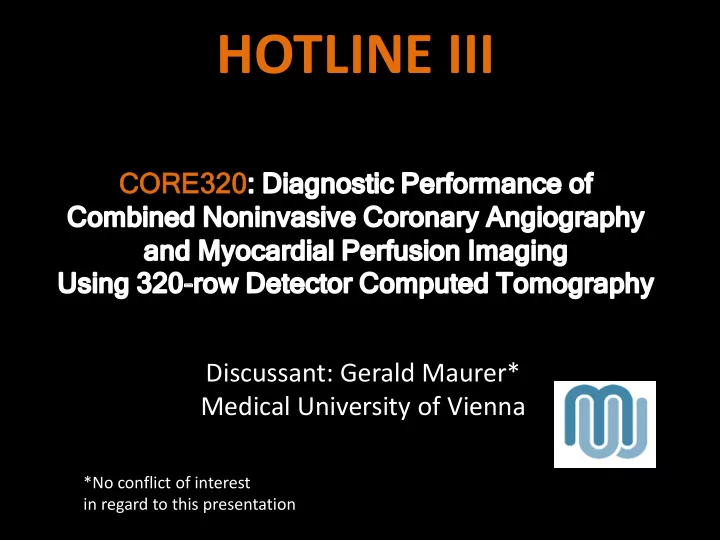

HOTLINE III CORE3 CORE320 Discussant: Gerald Maurer* Medical University of Vienna *No conflict of interest in regard to this presentation
Background and Rationale • The benefits of revascularization are highest in patients who have coronary stenoses that are hemodynamically significant – Evidence for SPECT – Evidence for invasively measured FFR (FAME trial) – FAME vs. COURAGE trial – Limited evidence for CTP, mostly with 64-MDCT systems
ESC/EACTS Guidelines on Myocardial Revascularization 2010
CORE320
Patient Based Results CTA-CTP vs. ICA/SPECT to predict Revascularization ( Reference Standard: R evascularization at 30 days) 1.0 0.9 0.8 Patient Based P = 0.13 Combined CTA-CTP 0.7 Combined ICA-SPECT Sensitivity 0.6 vs. Reference Standard 0.5 CTA-CTP ROC Area = 0.72 (Revascularization) 0.4 95% CI [0.67-0.78] 0.3 ICA-SPECT ROC Area = 0.76 95% CI [0.71-0.82] 0.2 0.1 QCA+SPECT CT 0.0 0.0 0.1 0.2 0.3 0.4 0.5 0.6 0.7 0.8 0.9 1.0 1-Specificity
Open issues and potential limitations • Who should have this test? • Who should go directly to invasive angiography based on clinical information? • Role of CTP vs. invasive FFR measurement at time of angiography? • Stress CTP is an additional study after CTA and requires additional radiation and contrast administration. • 320 row detector CT currently not widely available, data may not apply to 64 row CT • Concerns and considerations: – Exposure to radiation and contrast – Cost effectiveness
Recommend
More recommend